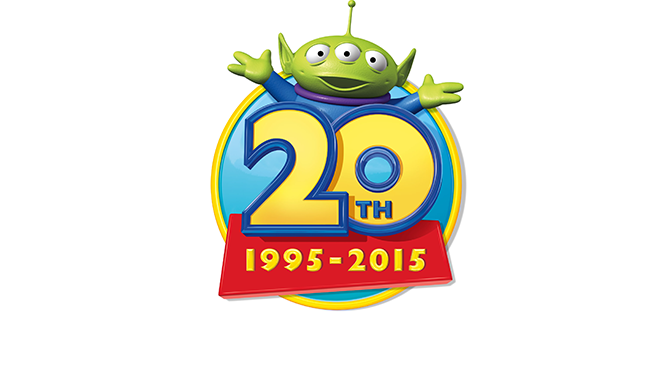It’s hard to believe that it’s only been 20 years since the release of Toy Story. In those two decades, two sequels have been released (with another coming in 2019), two television specials have aired and three of Disney’s theme parks around the world have a Toy Story-themed attraction.
In the first five days of Toy Story’s release (on Thanksgiving weekend, November 22nd, 1995), it earned over $39 million. It placed first at that weekend’s box office and it stayed at number one for the next two weekends. Toy Story was the highest-grossing domestic film of 1995, beating out Batman Forever and Apollo 13. The film gained a total of more than $362 million worldwide. It also was the third highest-grossing animated film after The Lion King (1994) and Aladdin (1992).
What makes the film’s story so compelling is the length of time it took to make, the size of its small production team and the fact that it was the first feature-length film done by computer animation. Toy Story ushered in a new era of computer-animated films. Computer-animated films are the new normal.
Toy Story hit the big screen in 1995 but the seed for the idea for creating a computer-animated film started in the early 80’s with John Lasseter, Ed Catmull and Alvy Ray Smith. While Lasseter was working as an animator at Walt Disney Feature Animation, two of his friends at the company showed him the lightcycle scene from the movie Tron. In this scene, Flynn, Tron and Ram are being chased by a group from the Master Control Program. Lasseter was blown away. It got him thinking about making a fully computer-animated film.
He pitched the idea to Disney executives in 1984 but his idea was rejected and he was fired. The executives believed the only reason to use computers for animation was if it made it cheaper and faster to produce. Lasseter went to work for Lucasfilm in 1984. He worked as part of The Graphics Group in the computer division where Catmull and Smith had been working since 1979.
The Graphics Group team consisted of about 40 employees, including Lasseter, Catmull and Smith. The Group was spun off as a corporation in February 1986 and became Pixar Animation Studios. Pixar was founded by Catmull, Smith and Steve Jobs, who helped financially with an investment. This was shortly after Jobs was fired from Apple Inc.
With Pixar in place, Catmull, Smith and Lasseter could work on whatever they liked, including the early stages of a full–length computer-animated film called Tin Toy which was the basis for Toy Story.
Lasseter created Tin Toy, a computer-animated short while at Pixar in 1988. Tin Toy showed off the Pixar Image Computer’s capabilities. The computer had been developed while the founders of Pixar were at Lucasfilm. Tin Toy would go on to win the 1988 Academy Award for best animated short film; it was the very first computer-generated film to do so.
Tin Toy gained Disney’s attention and the new executive team at The Walt Disney Company, including CEO Michael Eisner and chairman Jeffrey Katzenberg, in the film department. Computer animation was something they hadn’t seen before. Disney was still producing 2D-animated films at the time, such as The Little Mermaid (1989) and Oliver & Company (1988).
Tin Toy got Disney interested in striking a production deal with Pixar. The idea was Pixar would do the animation while Disney would distribute and market the film. This was the chance for Lasseter, Catmull and Smith to fulfill their shared dream of creating a computer-animated film. That film would be Toy Story.
Toy Story was the highest-grossing domestic film of 1995, beating out Batman Forever and Apollo 13. The film gained a total of more than $362 million worldwide. It also was the third highest-grossing animated film after The Lion King (1994) and Aladdin (1992).
Twenty years later, Toy Story still has a 100% rating on the review aggregator site, Rotten Tomatoes with an average rating of 9/10. The critic consensus for the site about the film is, “Entertaining as it is innovative, Toy Story reinvigorated animation while heralding the arrival of Pixar as a family-friendly force to be reckoned with.”
Reviewers of the film hailed it for computer animation, voice cast and its ability to appeal to a number of different age groups. Roger Ebert’s review compared the film’s innovative animation to Who Framed Roger Rabbit by saying, “both movies take apart the universe of cinematic visuals, and put it back together again, allowing us to see in a new way.”
Toy Story was ranked 8th on TIME’s “Best 10 films of 1995” and in 2011 was named one of the “25 All-TIME Best Animated Films.”
The film received and was nominated for numerous awards, one of which was given to John Lasseter, who received an Academy Special Achievement Award in 1996 “for the development and inspired application of techniques that have made possible the first feature-length computer-animated film.”
Computer animation has become increasingly more popular because it was something that audiences had not seen before and Toy Story was the first real experience for movie-goers.
With Toy Story, Pixar ushered in a new media. Pixar is continually working on new computer-animated films and shorts. Even Disney has made the transition to producing only computer-animated films. They are no longer making traditionally animated films.
Most animated films you see nowadays will be computer-generated. Pixar brought in this new era of movies and they are leading it, with Disney at a close second.
So here’s to the 20th anniversary of Toy Story, the world’s first feature-length computer-animated film. It will only be a few short years until the 30th anniversary. Until then, in the words of Buzz Lightyear, “To Infinity and Beyond!”

Leave a comment